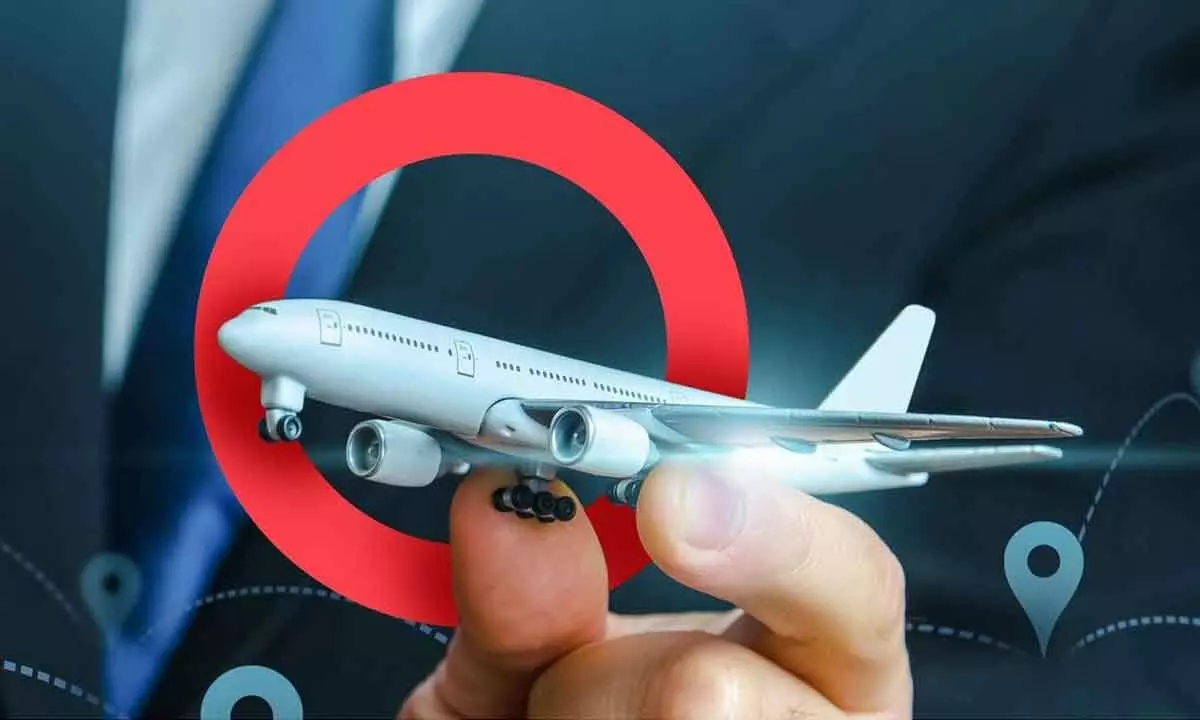Tech innovations adding vibrancy to brand loyalty for airlines’
An idle plane costs the operator around $81 every minute
image for illustrative purpose

It is estimated that just one per cent reduction in jet fuel use alone could save the industry $30 billion over 15 years.Even minimal changes in fuel efficiency, reduction in operational and training costs can help the sector to save significantly
The notion that a memorable travel experience begins long before a passenger boards an aircraft has never been more pertinent. In an era saturated with choice and increased consumer demand, the enrichment of the airline passenger experience is not merely an added advantage; it is an imperative mechanism for airlines to differentiate themselves within the highly competitive aviation market. The key to this differentiation is the unwavering commitment to customer satisfaction.
Flight delays and operational inefficiencies are not just annoying for the flyers, but they also cost a great deal of dollars for the airline industry. It is estimated that during any given flight the travel time, fuel use, and flight path are 18% to 22% inefficient and an idle plane costs the operator $81 every minute. Time wasted due to operational glitches like unplanned maintenance, or inspection delays are unnecessary and avoidable. Such operational inefficiencies mean extra costs to the airline and most importantly they also add to the dissatisfaction of the customer.
In the age of digitisation and social media ‘hell hath no fury like that of a disgruntled customer’. Hence, airlines try to improve their services continuously. Thankfully, technologies implemented right help them do it easily.
Digital applications can considerably reduce the instances of operational malfunctions. For instance, they can notify engineers on the maintenance required even before a plane touches down, through digital twins simulating the wear and tear on an aircraft’s systems and parts.
Flight delays and the costs associated with them are an even bigger deal for airlines. To reduce instances of delays and improve operational efficiencies, GE has created an innovative problem-solving process called FastWorks, which airlines are using to address customer issues more quickly and efficiently. Further, PASSUR, a business intelligence company,has also partnered with GE to build intelligence solutions for the aviation industry to address biggest operational challenges and opportunities with the goal of improving overall airline and airport reliability, service, and cash flow.
Personalisation:
According to the SITA 2017 Air Transport IT Trends Insights report, airlines and airports are estimated to spend nearly $33 billion on IT this year. More than half of these investments (68 percent) are expected to be spent on customer personalisation. These numbers clearly suggest that airlines are well aware of the fact that today’s digital natives are used to customised interactions and personalised solutions, thanks to the growth of e-commerce and the popularity of social media channels.
For airlines, customer interactions start way before the flight is even boarded; the test begins when the flyer is looking for a flight and extends way after they un-board. It can be a daunting task to keep up with the changing customer demands and provide a seamless and delightful experience throughout the passenger journey.
Technology provides enough customer data enabling airlines to get to know their customers well. Further, when it comes to providing data to airlines, customers don’t shy away. According to research, 85% of travellers are happy to provide additional personal data to airlines. Analytics can help immensely in making sense of all this data and help airlines answer the questions mentioned above.
Digital applications can help airlines personalise customer experience across every touch point. Technology can delight customers with customised offers, easy and faster check-ins, providing options to track and control their luggage remotely, and so on and so forth.
Cost efficiency:
It is estimated that just one per cent reduction in jet fuel use alone could save the industry $30 billion over 15 years. We know that the commercial aviation industry trades on low margins and high volume. Even minimal changes in fuel efficiency, reduction in operational and training costs can help the sector to save significantly.
Over the years fuel efficiency of aircrafts has increased. Today, fuel per passenger kilometre has come down to 70% since the 1960’s, and aircrafts have become 75% quieter. But simultaneously, the number of flights has also increased by leaps and bounds. This prolific rise in the volume of flights not just impacts costs; it is also detrimental to the environment.
Digitisation can help airlines in reducing the environmental implications due to the increase in air traffic. For instance, pilots can follow pre-programmed landing patterns that save energy and improve safety, while airlines can also analyse this data to optimise routes and altitudes to reduce emissions.
Further, digitisation implemented right can go a long way in helping the industry with less downtime, better service and higher margins. Biometric identity management, Beacons and WayFinding solutions, Pre-airport self-service options etc. are some ways the airlines are delegating manual tasks to technology and saving costs.

